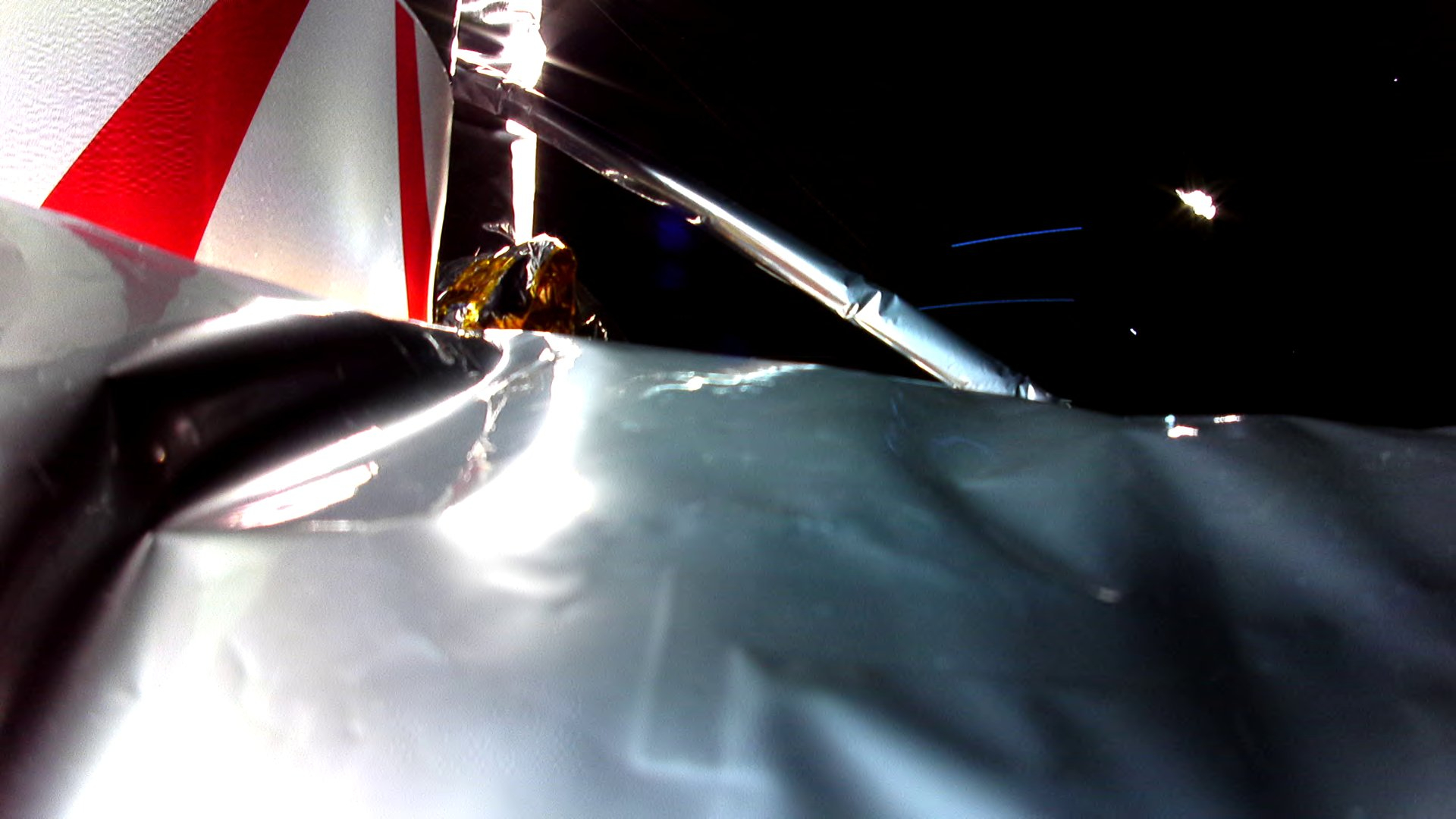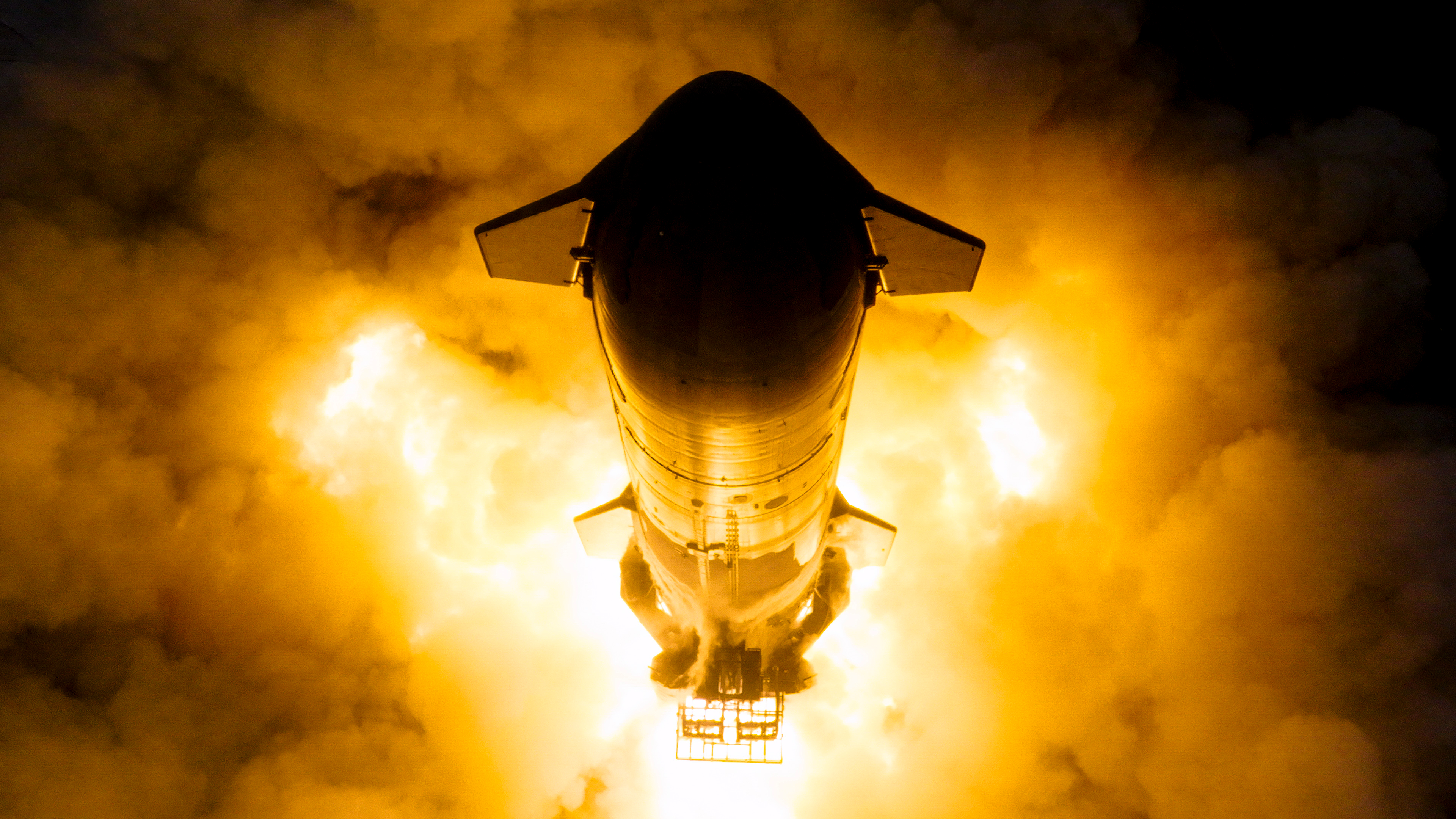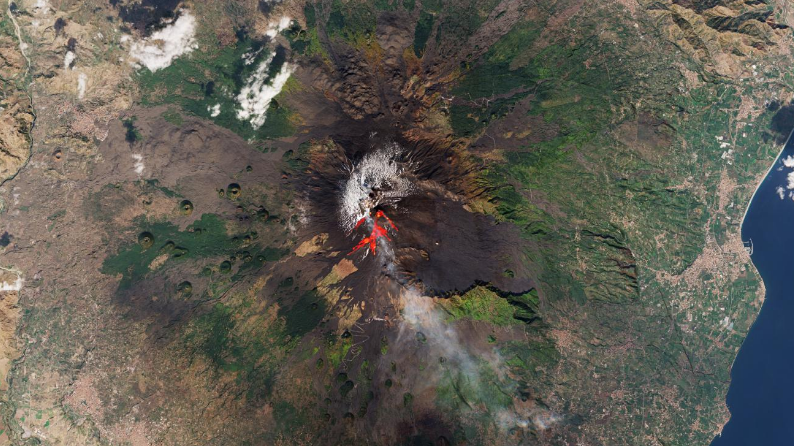NASA and its advisory bodies remain concerned about the low flight rate planned for its crewed Orion spacecraft and Space Launch System (SLS) rocket, but the space agency doesn’t have enough vehicles to fly more often this decade. Hardware to launch only two more SLS vehicles is available until development of the Exploration Upper Stage (EUS) upgrade is completed, which isn’t expected to be ready to launch on Artemis IV until late 2028 at the earliest.
Following the Artemis II lunar flyby test flight planned late next year, the Artemis III Orion and crew could be the only one flying to the Moon in the following four years, but NASA still has the option to buy more Interim Cryogenic Propulsion Stages (ICPS) built by United Launch Alliance and continue flying the current Block 1 version SLS. ULA has noted that the ICPS production line will remain open until next year, when the Delta IV that ICPS is derived from retires; however, NASA once again affirmed its choice not to buy any more ICPS units in mid-September.
Not enough SLS hardware to fly annually until EUS upgrade is ready
The gap between Artemis III and Artemis IV in the Artemis manifest has increased in the last year. Artemis III will see the final launch of the initial, Block 1 version of SLS, which uses the ICPS as an in-space second stage. Artemis IV will be the debut launch of the SLS Block 1B version, which replaces ICPS with the Exploration Upper Stage, which is still in development and will also require a new mobile launcher.
In the NASA OIG report on Mobile Launcher-2 (ML-2) in June 2022, Artemis IV had a notional, planning date of August 2026, which would only be months after aspirational/notional Artemis III launch date in late 2025.
ML-2 finally started construction in the last few months, but the project is late and the OIG audit on ML-2 detailed issues that realistically would delay its completion and delivery well past 2025, possibly as far as late 2027. Development of the EUS upgrade to the SLS Block 1B vehicle must also be completed for Artemis IV and that has also seen delays in the last few years.
By the government budget request released in February, NASA’s planning date for Artemis IV had moved out to September 2028. The current Artemis manifest shows the final two Block 1 missions, Artemis II and Artemis III, flying at the end of 2024 and the end of 2025, respectively, which leaves almost three years between Artemis III and IV.
NASA and the prime contractors for the main elements of the Orion and SLS vehicles are ramping up production, but there isn’t enough hardware to put together a full SLS in between Artemis III and IV, so Artemis is limited to the final two SLS Block 1 launches of Orion crewed spacecraft for the next five years — until all the Block 1B and Mobile Launcher hardware for Artemis IV is developed, constructed, assembled, and tested.
The Artemis manifest as it stands in 2023. In between Artemis I, which launched late in 2022, and Artemis IV which is scheduled for late 2028, NASA currently has only two opportunities to fly back to the Moon, on the second and third Artemis missions. (Credit: NASA)
Even if Artemis II and III move around on the calendar, shortening the time between one set of flights might require lengthening the time between the other. The multi-year gaps between Artemis missions are a long-running concern for NASA and some of its public advisory boards.
During presentations to the NASA Advisory Council in mid May and the National Academies in early June, leadership of NASA’s Exploration Systems Development Mission Directorate (ESDMD) and Moon to Mars Program Office were asked about the Artemis schedule and concerns about long layoffs in between flights, which go back to the last decade.
At the end of 2017, NASA was looking at a similar, nearly three-year long gap between the flights that are now called Artemis I and Artemis II; in its 2017 annual report, the Aerospace Safety Advisory Panel (ASAP) observed that: “This [operational launch gap] creates potential safety risks as the skills and number of the ground and launch workforce may naturally attrit over such a long inactive period, resulting in a critical loss of experience and knowledge.”
At a NASA Advisory Council Human Exploration and Operations (HEO) committee meeting on May 15, ESDMD Associate Administrator Jim Free was asked about and spoke to concerns and challenges of reaching that annual flight cadence.
Wayne Hale, former manager of the Space Shuttle Program for NASA and now chair of the HEO committee, noted that “At this committee we have had a long-standing recommendation that you at least get to a yearly flight rate and based on my experience and several of the other folks experience, it’s difficult to maintain proficiency [otherwise]. It actually becomes a mission assurance or safety thing with a very low flight rate. As a matter of fact, one wishes it was more than once a year.”
In similar discussions at the National Academies on June 7, Mr. Free noted in part: “Our risk right now is all about keeping a cadence of missions that keep our skills sharp.” Despite the concerns about the risks, NASA doesn’t have the resources to fly annually until the end of the decade; the target for reaching that goal is Artemis V, which has moved out to September 2029.
NASA still not interested in another ICPS, Block 1 extension
An alternative would be to continue flying SLS Block 1 and add additional missions to fill in the current two- or three-year gaps in the Artemis manifest by using ICPS until EUS, Block 1B, and ML-2 are all reaching completion or even overlapping their service; however, NASA has shown little interest. Since 2021, when the Trump Administration’s proposal to defund EUS and ML-2 was abandoned with the change of administrations, NASA has unequivocally supported the move from SLS Block 1 to Block 1B on Artemis IV.
NASA had a contract option to build a fourth ICPS that would have been needed to meet the Congressionally-mandated SLS launch of Europa Clipper, but the mandate was revoked in early 2021, and that option was not exercised.
In interviews since 2021 and as recently as August, ESD and SLS officials have not indicated any interest or awareness of interest in more Block 1 flights after Artemis III. In an email statement to NSF on Sept. 19, provided by NASA through its public affairs office in Washington, D.C., the agency said: “Although the contract with Boeing and their major subcontractor United Launch Alliance for the first three interim cryogenic propulsion stages provide the option for NASA to procure a fourth interim cryogenic propulsion stage, the agency is not pursuing purchasing hardware for a fourth flight of the SLS Block 1 configuration.”
Credit: NASA/Eric Bordelon.
(Photo Caption: Weld confidence articles for the EUS liquid oxygen tank are tested with tooling at Michoud Assembly Facility (MAF) in June 2023. The EUS structural test article and first flight article would follow completion and analysis of the weld confidence articles, work that is still in progress at MAF.)
An ICPS/Block 1 extension would not be the first; back at the end of 2017 when ASAP made recommendations in its annual report, one was to eliminate the earlier three-year long gap by building a second Mobile Launcher (ML) to allow SLS launches to continue on the first ML in the interim. Appropriators in Congress at the time agreed, providing funding in March 2018 for what would become ML-2 and for two additional Block 1 missions with ICPS.
At the time EUS development was nearing its critical design review, but the 2018 ICPS extension and ML-2 purchase by Congress came somewhat at the expense of EUS development. The EUS budget was temporarily cut and development was paused for a stage redesign; this was followed by the Trump Administration decision in 2019 to defund SLS upgrades like EUS and upgraded solid rocket boosters (SRB).
Congress never supported defunding EUS or ML-2 and NASA has subsequently also put the SRB upgrade, which will take SLS to Block 2, on contract; however, the shifting budgets, the defunding attempt, and effects from the COVID-19 pandemic have all factored into delays to the EUS schedule. EUS/Block 1B development was organized under its own office within the SLS program by 2021 and NASA held its critical design review for Block 1B in November 2022, but the agency is still looking at a long gap between the last Block 1/ICPS launch and the first EUS/Block 1B.
In 2021, the forecast was for the EUS structural test article (STA) to be completed at the begining of 2023 and delivered to Marshall Space Flight Center for testing; the latest public forecast was that the STA would be completed by the middle of 2024.
The first EUS flight article will be shipped from its Michoud Assembly Facility (MAF) factory in New Orleans to Stennis Space Center in Misssissippi for a Green Run design verification campaign similar to the one that the first SLS core stage went through in 2020-2021; previous forecasts were to finish the EUS Green Run in 2024, but NASA was now hoping to finish building the first flight article within 2024 to start the Green Run at Stennis after that.
It’s not clear what effect another ICPS extension would have on the EUS/Block 1B budget or development, but the upgrades have been made a top priority by Congress, so that could be another area of consideration.
ICPS production line quiet, but remains open until final Delta IV launch in early 2024
Additional sets of the three elements of the Block 1 Integrated Spacecraft and Payload Element would need to be bought to add extra Artemis missions to the manifest this decade, the ICPS, Launch Vehicle Stage Adapter, and Orion Stage Adapter.
The most complex of the three elements is United Launch Alliance’s ICPS, which is a derivative of the Delta Cryogenic Second Stage (DCSS) that flies on the retiring Delta IV launch vehicle. ULA has completed production of all of its hardware commitments to the U.S. Space Force for the final Delta IV Heavy launch and to NASA for the final two planned ICPS units; however, ULA has planned for years to keep the Delta/ICPS production line in place until the final Delta flight is completed.
Credit: United Launch Alliance.
(Photo Caption: Major elements of the final ICPS in production at ULA’s Decatur, Alabama, factory in 2022. ULA will maintain the Delta and ICPS production line until the final Delta IV launch next year.)
“Our estimate is that Delta IV production capabilities will end in late 2023 as the final Delta IV is currently planned for 2024 as we transition to the Vulcan Centaur,” a statement provided by ULA to NSF back in February 2020 said. “However, we will maintain the capabilities until the final Delta IV flight as required for risk mitigation.”
“The ICPS production is tied to the tooling for the Delta IV line, but it is not tied to production retirement of the Delta IV launch vehicles. ICPS is produced using the same production techniques (tooling, stand, etc.) and these capabilities will be retained until no longer needed.”
The final Delta IV launch, using the triple-core, Heavy version of the rocket, will fly the NROL-70 payload for the U.S. military, planned in the first quarter of 2024. Production of Delta hardware has already been completed; the last Delta hardware to ship from ULA’s Decatur, Alabama, factory was the last ICPS, planned for Artemis III, at the end of July.
ULA is now focused on ramping up production of their new Vulcan launch vehicle, but doesn’t seem to be discouraging talk of building more ICPS units recently; in response to a question in late August on social media about whether the ICPS/DCSS production lines are still open in case another one is needed, ULA chief executive Tory Bruno replied, “Yes.”
NASA and/or Congress still have at least a few more months to consider it before the production tooling has to be mothballed.
(Lead image: Orion and SpaceX’s lunar Starship travel around the Moon on the Artemis III mission. Credit: Mack Crawford for NSF.)
The post Lack of SLS rockets limit NASA Artemis manifest appeared first on NASASpaceFlight.com.
NASASpaceFlight.com





